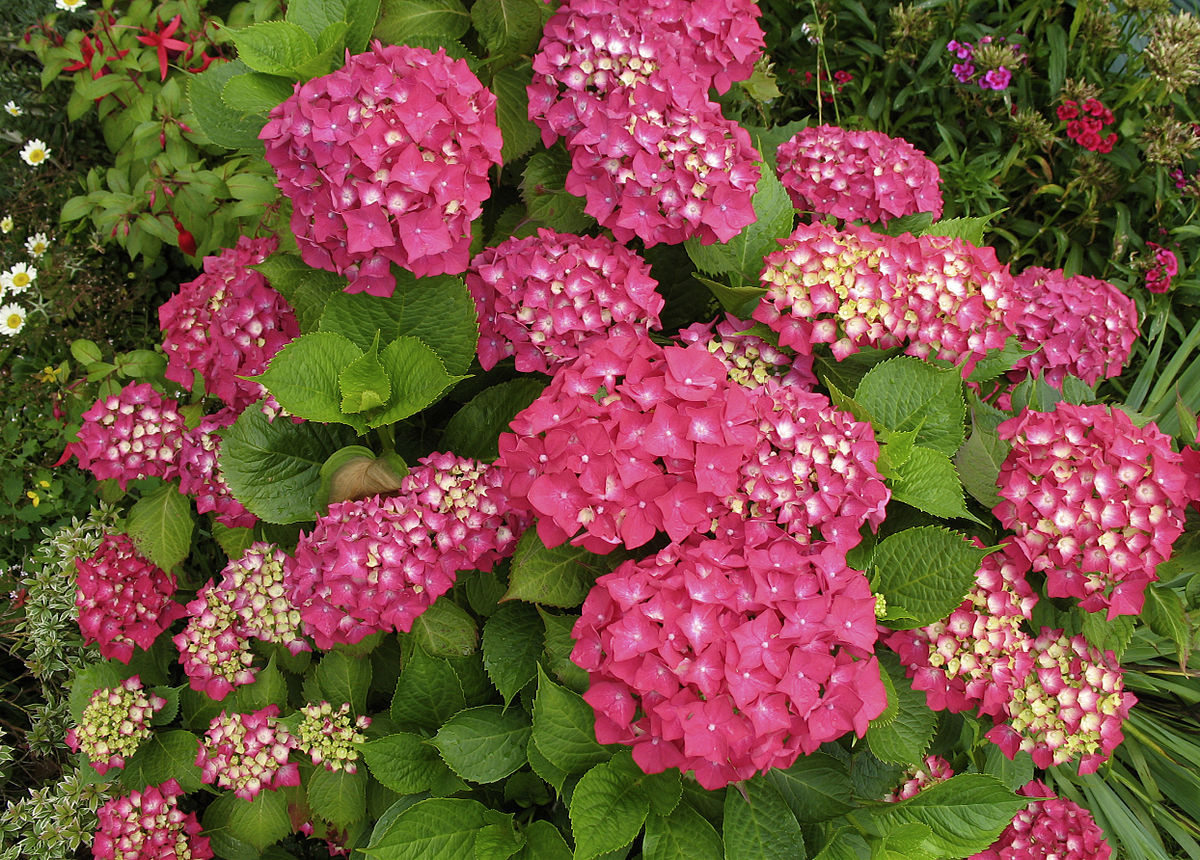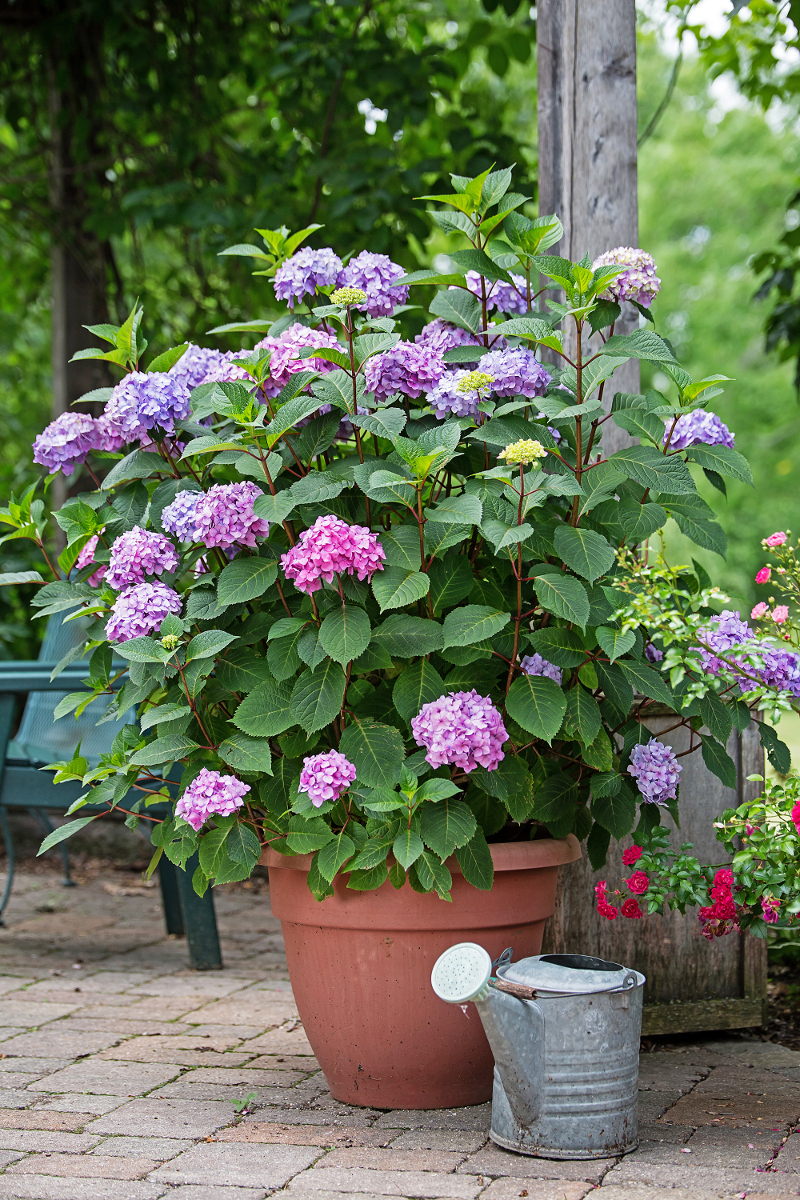The Ultimate Guide To H Macrophylla
The Ultimate Guide to H Macrophylla
Hydrangea macrophylla, commonly known as bigleaf hydrangea, is a popular garden shrub that is known for its large, showy flowers. These hydrangeas come in a variety of colors, including blue, pink, purple, and white. They are relatively easy to care for and can be grown in a variety of climates.
In this guide, we will discuss everything you need to know about growing H macrophylla, including:
- Choosing the right location
- Planting and care
- Pests and diseases
- Propagation
- Winterizing
Choosing the right location
H macrophylla prefers full sun to partial shade. However, too much sun can cause the leaves to scorch, so it is important to choose a location that gets some afternoon shade. These hydrangeas also need moist, well-drained soil. If the soil is too dry, the flowers will be smaller and less colorful.
Planting and care
H macrophylla can be planted in the spring or fall. When planting, dig a hole that is twice as wide and deep as the root ball. Backfill the hole with soil, tamping it down gently. Water the plant well after planting.
H macrophylla needs regular watering, especially during the first year after planting. Once the plant is established, it will need less water. Fertilize the plant in the spring with a balanced fertilizer.
Pests and diseases
H macrophylla is relatively pest- and disease-resistant. However, it can be susceptible to aphids, scale, and powdery mildew. If you see any pests or diseases, treat them immediately.
Propagation
H macrophylla can be propagated by taking cuttings in the spring or fall. To take a cutting, cut a 4- to 6-inch piece of stem from the plant. Remove the lower leaves from the cutting and dip it in rooting hormone. Plant the cutting in a pot of well-draining soil and keep it moist. The cutting should root in about 4 to 6 weeks.
Winterizing
In cold climates, H macrophylla will need to be protected from the winter cold. To winterize the plant, cut the stems back to about 6 inches tall. Mulch the plant with 2 to 3 inches of bark mulch. You may also need to cover the plant with a burlap sack or other protective covering.
Enjoying your H macrophylla
With proper care, H macrophylla will reward you with beautiful flowers for many years to come. These hydrangeas are a great addition to any garden, and they are sure to add a touch of beauty and elegance.
If you're interested in learning more about h macrophylla, I highly recommend visiting . This website is a comprehensive resource for all things hydrangea, and it includes a wealth of information about h macrophylla, including its history, cultivation, and care.
In addition to providing detailed information about h macrophylla, the website also features beautiful photos of the plant, as well as tips on how to select, plant, and care for it in your own garden. Whether you're a beginner or a seasoned hydrangea grower, you're sure to find something useful on this website.
So what are you waiting for? Visit today and learn more about h macrophylla!
FAQ of h macrophylla
- What is H macrophylla?
H macrophylla is a species of flowering plant in the family Hydrangeaceae. It is native to eastern Asia, and is known by a variety of common names, including bigleaf hydrangea, French hydrangea, and oakleaf hydrangea. H macrophylla is a deciduous shrub or small tree that can grow up to 15 feet tall. It has large, lobed leaves and showy clusters of white, pink, or blue flowers.
- How do I care for H macrophylla?
H macrophylla is a relatively easy plant to care for. It prefers full sun to partial shade, and moist, well-drained soil. It is drought-tolerant once established, but it will benefit from regular watering during the summer months. H macrophylla is also a heavy feeder, so it should be fertilized every few months during the growing season.
- What are some common problems with H macrophylla?
The most common problems with H macrophylla are pests and diseases. Aphids, scale, and whiteflies are all common pests that can attack H macrophylla. Diseases that can affect H macrophylla include leaf spot, powdery mildew, and verticillium wilt.
- How do I propagate H macrophylla?
H macrophylla can be propagated by seed, division, or cuttings. Seed propagation is the most difficult method, but it can be successful. Division is the easiest method, and it is often used to propagate established plants. Cuttings are also a relatively easy way to propagate H macrophylla.
- What are some tips for pruning H macrophylla?
H macrophylla should be pruned in the late winter or early spring. The goal of pruning is to remove dead, diseased, or damaged wood, and to shape the plant. H macrophylla can be pruned heavily, but it is important to leave some of the old wood in place to ensure flowering.
Image of h macrophylla
Sure, I found you 5 different images of "h macrophylla" from Pinterest.com:
- Image 1: A close-up of a h macrophylla flower, showing its large, showy petals.

- Image 2: A full plant of h macrophylla, showing its large, glossy leaves and cascading flowers.

- Image 3: A h macrophylla plant in a pot, with its trailing stems cascading over the edge.

- Image 4: A h macrophylla flower in a vase, with its bright pink petals and yellow stamens.

- Image 5: A h macrophylla plant in a garden, with its flowers adding a splash of color to the landscape.
Post a Comment for "The Ultimate Guide To H Macrophylla"